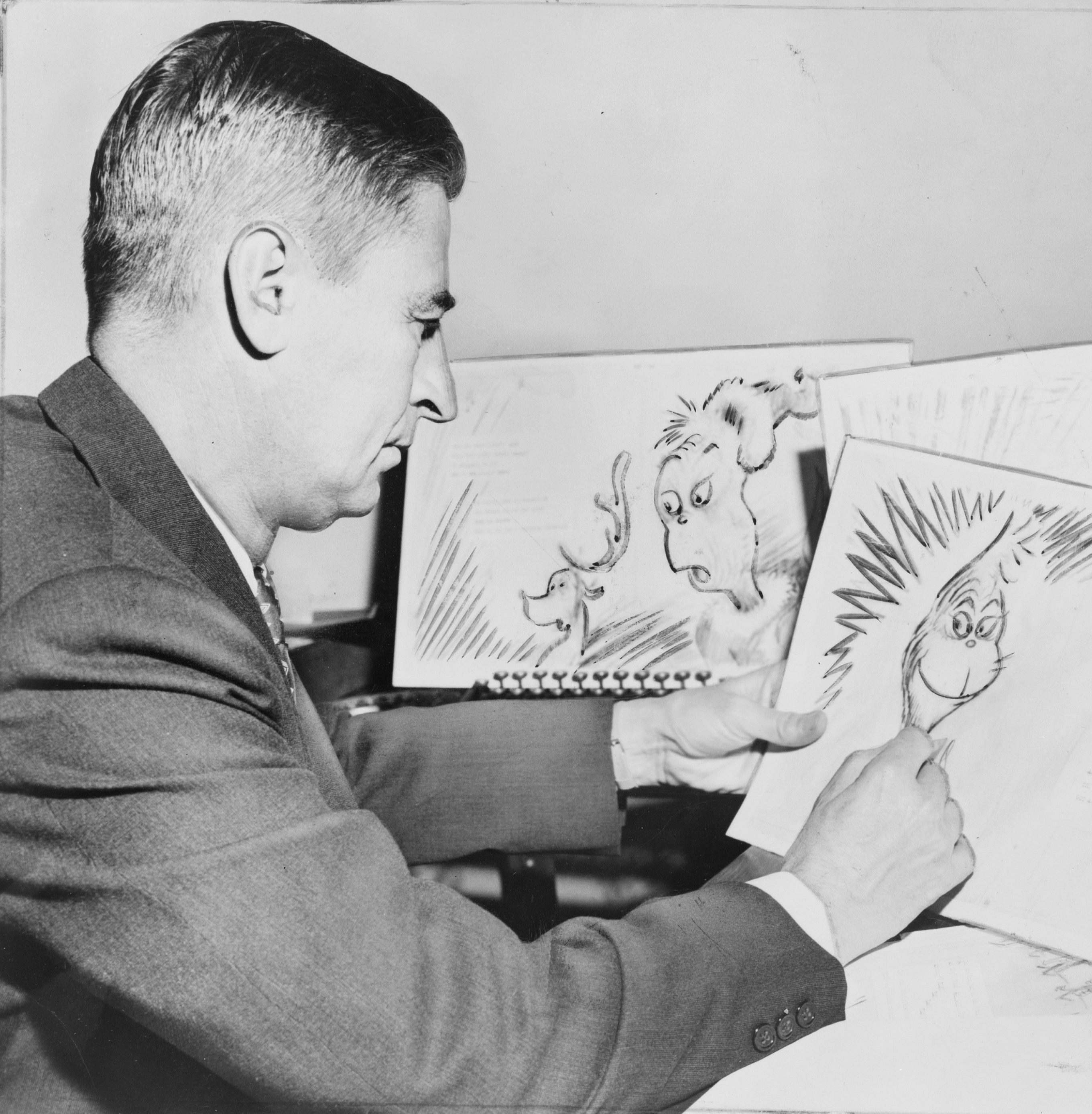
from All About Dr. Seuss, catinthehat.org
Theodor Seuss Geisel, better known to the world as the beloved Dr. Seuss, was born in 1904 on Howard Street in Springfield, Massachusetts. Ted's father, Theodor Robert, and grandfather were brewmasters in the city. His mother, Henrietta Seuss Geisel, often soothed her children to sleep by "chanting" rhymes remembered from her youth. Ted credited his mother with both his ability and desire to create the rhymes for which he became so well known.
At the time of his death on September 24, 1991, Ted had written and illustrated 44 children's books, including such all-time favorites as Green Eggs and Ham, Oh, the Places You'll Go, Fox in Socks, and How the Grinch Stole Christmas. His books had been translated into more than 15 languages. Over 200 million copies had found their way into homes and hearts around the world.
Besides the books, his works have provided the source for eleven children's television specials, a Broadway musical and a feature-length motion picture. Other major motion pictures are on the way.
His honors included two Academy awards, two Emmy awards, a Peabody award and the Pulitzer Prize.

5: Dr. Seuss rhymes with another epic figure in children's literature: Mother Goose. Coincidence? No. That's why he chose it.
4: When presenting the dialogue for the magicians in Bartholomew and the Oobleck, Seuss employed the use of trochees (or chorues) which presents text in an alternating pattern of stressed and unstressed syllables ("Shuffle, duffle, muzzle, muff". The techique was also used by Shakespeare with his cauldron stirring witches in Macbeth (Toil! Toil!), by Poe in his poem The Raven and often in nursery rhymes.
3: After his career as a children's author/illustrator began, Geisel worked as an editorial cartoonist in New York during World War 2, which illustrated his rabid anti-fascism views. They were also collected in a book called Dr.Seuess Goes to War, with an introduction by Art Spiegleman. Suess also wrote several WW2-era propaganda films.
2. Theodore Geisel wrote children's books under a trio of pen names: Dr. Seuss, which was reserved for the books he both wrote and illustrated; as Theo LeSeig, for books that he wrote without illustrating; and as Rosetta Stone, for one book he penned called Because a Little Bug Went Ka-choo!
1: Dr. Seuss' The Cat in the Hat was born as a response to an article which was published in Life Magazine in 1954. The piece criticized American school primers as intensely boring, unchallenging to readers and responsible for causing harm to children's literacy. The article called for more primers to up the excitement by energizing the language and including drawings like those of "imaginative geniuses among children’s illustrators, Tenniel, Howard Pyle, Theodor S. Geisel." Using the piece as a call to action, Geisel and his publisher came up with a list of 400 "exciting" words, which Seuss than narrowed down for the book, and included 13 more of his own. The final product is 1626 words in length and uses a total vocabulary of 236 words.
No comments:
Post a Comment